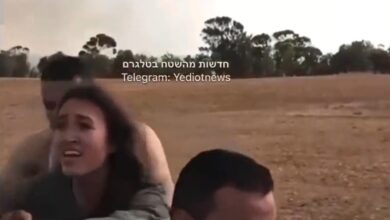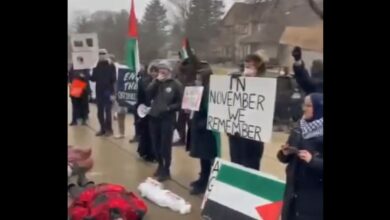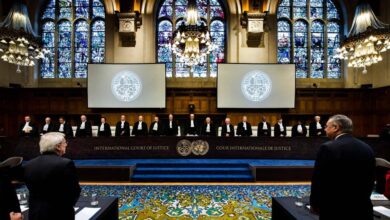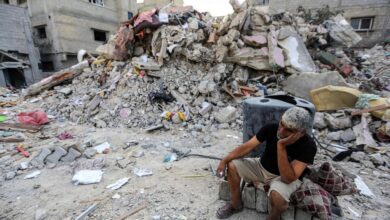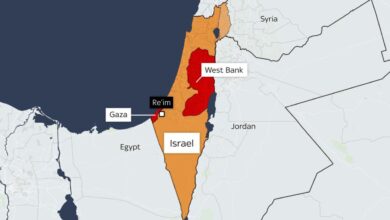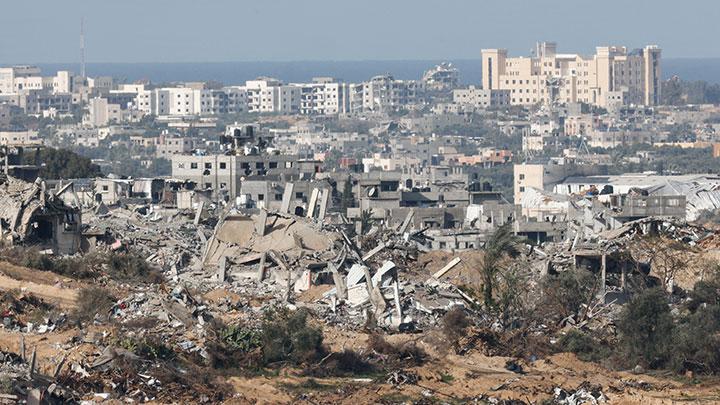
Israel Hamas Gaza News A Complex Crisis
Israel Hamas Gaza news dominates headlines, highlighting a complex and deeply rooted conflict. This ongoing crisis involves a tangled web of historical grievances, current violence, and a desperate humanitarian need. Understanding the multifaceted nature of this situation requires examining various perspectives, from the actions of key players to the suffering of civilians.
This in-depth look at the Israeli-Palestinian conflict, centered on recent events in Gaza, will delve into the historical context, current developments, humanitarian concerns, international responses, political implications, media coverage, potential outcomes, and the human impact of this devastating conflict.
Overview of the Conflict
The Israeli-Palestinian conflict is one of the world’s longest-standing and most complex disputes. Rooted in competing claims to the land of historical Palestine, the conflict has evolved through decades of violence, displacement, and political maneuvering. Understanding the historical context, the perspectives of both sides, and the roles of international actors is crucial to comprehending the current crisis.
Historical Context
The conflict’s origins lie in the British Mandate for Palestine, established after World War I. This period witnessed increasing Jewish immigration to Palestine, often facing resistance from the Arab population. The 1948 Arab-Israeli War, following the declaration of the State of Israel, resulted in the displacement of hundreds of thousands of Palestinians and the establishment of Israel. Subsequent conflicts, including the Six-Day War and the Yom Kippur War, further solidified the division and heightened tensions.
The occupation of Palestinian territories, particularly the West Bank and Gaza Strip, added another layer of complexity to the situation, leading to continued conflict and ongoing humanitarian concerns.
Israeli Perspective
Israelis view the conflict as a struggle for security and self-determination in a region marked by historical antisemitism and ongoing threats. The establishment of Israel, they argue, was a response to the need for a safe haven for Jews following the Holocaust. Israel’s security concerns often center on the threat of Palestinian violence and the need to defend its borders.
The occupation of Palestinian territories is viewed by some Israelis as a necessary measure to ensure security, while others advocate for a different approach to conflict resolution.
Palestinian Perspective
Palestinians see the conflict as a struggle for self-determination and an end to the occupation of their ancestral lands. They view the establishment of Israel as a dispossession of their land and people, leading to a refugee crisis and the ongoing loss of their heritage. Palestinian aspirations center on the establishment of an independent state, alongside Israel, with East Jerusalem as its capital.
Their perspective emphasizes the right of return for Palestinian refugees and the need for an end to Israeli occupation.
Role of International Actors
International actors have played various roles in the conflict, often with differing degrees of success. The United Nations, through organizations like the UN Relief and Works Agency for Palestine Refugees in the Near East (UNRWA), has attempted to address the humanitarian crisis. Other international powers have attempted to mediate peace talks and promote a two-state solution. However, a lack of consistent commitment and a continued imbalance of power have often hindered meaningful progress.
The Israel-Hamas-Gaza conflict continues to dominate headlines, with the escalating violence raising serious concerns. However, the recent Supreme Court decision on Koch Chevron deference, as seen in this article koch chevron deference supreme court , highlights a different kind of power struggle, albeit one with potentially far-reaching consequences for environmental regulations. This ultimately brings the focus back to the urgent need for a peaceful resolution to the Israeli-Palestinian conflict.
Timeline of Key Events
| Date | Event | Location | Description of the event |
|---|---|---|---|
| 1947 | UN Partition Plan | United Nations | The UN General Assembly adopted a resolution recommending the partition of British Mandate Palestine into separate Arab and Jewish states. |
| 1948 | Arab-Israeli War | Palestine | The Arab-Israeli War followed the declaration of the State of Israel, leading to displacement and conflict. |
| 1967 | Six-Day War | Israel, West Bank, Gaza Strip | Israel gained control of the West Bank, Gaza Strip, and the Sinai Peninsula. |
| 1993 | Oslo Accords | Oslo, Norway | The Oslo Accords were signed between Israel and the Palestine Liberation Organization (PLO), marking a significant step towards a two-state solution. |
| 2000s-Present | Ongoing conflict | West Bank, Gaza Strip | Tensions have continued to escalate, with periods of intense violence and political deadlock. |
Recent Developments: Israel Hamas Gaza News
The escalating violence in Gaza has painted a grim picture of suffering for civilians caught in the crossfire. Recent weeks have witnessed a dramatic increase in military actions, leading to a surge in casualties and displacement. Understanding the differing narratives of both Israeli and Palestinian sides is crucial to comprehending the complex dynamics of this conflict.The current military actions, characterized by air strikes and ground operations, are causing significant damage to infrastructure and impacting the daily lives of the Palestinian population.
The relentless nature of the fighting, coupled with the ongoing blockade, has created a humanitarian crisis. The dire situation demands a swift and effective response to alleviate the suffering of those affected.
Israeli and Palestinian Accounts of the Current Violence
The Israeli government contends that its military actions are necessary to defend its citizens from Hamas attacks. They emphasize the threat posed by Hamas’s extensive network of tunnels and weaponry, highlighting the need for a decisive response to prevent future attacks. Conversely, Palestinian sources maintain that the Israeli military actions are disproportionate and cause widespread civilian casualties, accusing Israel of targeting residential areas and vital infrastructure.
They highlight the humanitarian consequences of the ongoing conflict and the need for a cessation of hostilities.
Timeline of Events
This table provides a chronological overview of key events in the recent escalation, highlighting casualties and locations.
| Date | Event | Casualties | Location |
|---|---|---|---|
| October 26, 2023 | Israeli air strikes target Hamas infrastructure in Gaza. | Multiple casualties reported, including civilians. | Gaza Strip |
| October 27, 2023 | Hamas launches rocket attacks on Israeli cities. | Reports of injuries in Israeli settlements. | Southern Israel |
| October 28, 2023 | Israeli ground forces advance into Gaza. | Significant casualties on both sides. | Various locations within Gaza |
| October 29, 2023 | International calls for a ceasefire. | Numerous civilians injured and displaced. | Gaza Strip |
Humanitarian Crisis
The ongoing conflict between Israel and Hamas in Gaza has unleashed a devastating humanitarian crisis. Civilians, particularly women and children, are bearing the brunt of the violence, facing unimaginable hardship and suffering. The relentless bombardment and the resulting destruction of infrastructure have created a dire situation, severely impacting access to essential resources. The international community is scrambling to respond to the escalating needs of the affected population.The situation in Gaza demands immediate and substantial aid to alleviate suffering and prevent further catastrophe.
The destruction of homes, hospitals, and vital services necessitates a coordinated and comprehensive approach to recovery. The long-term effects of this crisis will undoubtedly be profound, necessitating sustained international support to rebuild lives and communities.
Impact on Civilians
The conflict’s impact on Gaza’s civilian population is profound and multifaceted. Homes have been destroyed, leaving families without shelter. The disruption of essential services, including water, sanitation, and healthcare, has created serious public health concerns. The psychological trauma experienced by survivors is a critical, often overlooked, aspect of the humanitarian crisis.
Needs of the Affected Population
The needs of the affected population are extensive and urgent. Food, water, and shelter are immediate necessities. The destruction of infrastructure, including water treatment plants, has significantly impacted access to clean water. The medical system is overwhelmed, with a shortage of essential medicines and trained personnel. The psychological toll on children and adults is also a critical concern.
Aid Organizations Providing Assistance
Numerous aid organizations are working tirelessly to provide assistance to the affected population in Gaza. These organizations play a crucial role in delivering vital supplies and support to those in need. Organizations like the United Nations Relief and Works Agency for Palestine Refugees in the Near East (UNRWA), Doctors Without Borders, and the International Committee of the Red Cross are actively engaged in relief efforts.
Detailed Needs Assessment
| Need | Description | Organization | Status |
|---|---|---|---|
| Food | Provision of basic food staples, including rice, lentils, and other essential nutrients. | World Food Programme (WFP) | Active |
| Water | Ensuring access to safe drinking water and sanitation facilities. | UNICEF | Deploying water purification units. |
| Shelter | Providing temporary housing and support for families displaced from their homes. | International Rescue Committee (IRC) | Distributing emergency tents and supplies. |
| Medical Care | Providing medical treatment, including trauma care and essential medicines. | Doctors Without Borders | Operating mobile clinics and providing emergency surgery. |
| Psychological Support | Providing mental health services to address the psychological trauma of the conflict. | International Committee of the Red Cross (ICRC) | Assessing needs and deploying counselors. |
International Response
The recent escalation of violence in Gaza and Israel has prompted a swift and varied international response. Nations and organizations worldwide have expressed concern, offering varying degrees of support and condemnation. The divergence in reactions reflects the complex geopolitical landscape and differing perspectives on the conflict. A nuanced understanding of these responses is crucial to comprehending the current situation and potential future trajectories.The international community’s response to the conflict is multifaceted, encompassing diplomatic efforts, humanitarian aid, and calls for de-escalation.
Different nations and organizations have approached the situation with varying levels of urgency and action, often influenced by their own geopolitical interests and historical relationships with the involved parties. Analyzing these diverse reactions reveals the intricate web of factors influencing international engagement.
Reactions of Different Nations and Organizations
Diverse nations and organizations have expressed varied opinions regarding the escalating conflict. Some nations have issued strong condemnations of the violence, while others have adopted a more neutral stance. The differences in approach highlight the complexities of the situation and the inherent challenges in finding a universally acceptable solution.
The ongoing Israel-Hamas-Gaza conflict is truly heartbreaking. It’s a situation filled with violence and suffering. But amidst this tragedy, stories like the one about lovers in Auschwitz, Keren Blankfeld and József Debreczeni, in the cold crematorium, highlight the enduring human spirit and the devastating impact of hatred. This reminds us that even in the darkest of times, love and resilience can persist, while also putting the current conflict in Israel, Gaza and Hamas in a different perspective.
The suffering in these situations is undeniable.
- Many Western nations, including the United States, have voiced strong condemnation of Hamas’ actions, emphasizing the need for restraint and an end to the violence. Simultaneously, they have expressed concern for the civilian population and called for a humanitarian ceasefire.
- Some European nations have adopted a more balanced approach, criticizing the actions of both sides and advocating for diplomatic solutions to the conflict. This balanced perspective often reflects a commitment to both the safety of civilians and the preservation of international law.
- Several Arab nations have condemned the violence against civilians but have also emphasized the need to address the underlying causes of the conflict, often focusing on the Palestinian cause and the need for a two-state solution.
- Neutral nations have largely taken a more cautious approach, refraining from direct condemnation or support for either side. Their position often reflects a commitment to diplomacy and avoiding potential conflicts of interest.
Role of the UN and Other International Bodies
The United Nations and other international bodies have played a crucial role in mediating the conflict and addressing the humanitarian crisis. Their actions have ranged from condemning violence to facilitating humanitarian aid. Their efforts, however, have been limited by the ongoing conflict and the differing political agendas of the involved parties.The UN, through organizations like the UNHCR and the UN Relief and Works Agency (UNRWA), has been instrumental in providing aid to displaced populations and delivering critical supplies to those affected by the violence.
Their efforts, however, are often hampered by the security situation and logistical challenges. Other international organizations, such as the International Committee of the Red Cross (ICRC), have also been active in delivering humanitarian aid and facilitating prisoner exchanges.
International Response: A Comparative Analysis
The table below summarizes the responses of various countries and organizations to the recent events.
| Country/Organization | Response | Actions Taken | Impact |
|---|---|---|---|
| United States | Condemnation of Hamas actions, concern for civilians | Increased humanitarian aid, diplomatic pressure | Limited direct impact on the conflict but contributed to international condemnation |
| European Union | Balanced criticism of both sides, call for de-escalation | Diplomatic initiatives, humanitarian aid | Has not significantly influenced the immediate conflict but underscores the complexities of the issue |
| Arab Nations | Condemnation of violence against civilians, emphasis on Palestinian cause | Diplomatic statements, humanitarian aid to Palestinians | Acknowledges the underlying political issues but does not offer significant solutions |
| UN | Calls for ceasefire, humanitarian aid | Coordination of aid efforts, peacekeeping missions | Limited ability to enforce its calls for peace, but crucial for providing essential assistance |
| ICRC | Humanitarian efforts, prisoner exchanges | Providing aid to both sides, facilitating communication | Focuses on alleviating suffering, but its impact is limited by the ongoing violence |
Political Implications
The recent escalation of conflict between Israel and Hamas in Gaza has profound and multifaceted political implications for regional stability, peace negotiations, and inter-state relations. The actions and responses of various actors are likely to reshape the geopolitical landscape of the Middle East for years to come. Understanding these implications is crucial for navigating the complexities of this volatile situation.The conflict has exposed deep-seated tensions and mistrust between different parties.
The nature of the conflict, the scale of the violence, and the humanitarian crisis are all factors that will shape the future course of action and responses. This will inevitably impact the region’s trajectory and the likelihood of future peace negotiations.
Potential Impact on Regional Stability
The ongoing conflict has the potential to destabilize the already fragile regional security landscape. The actions of neighboring countries, both those directly involved and those indirectly affected, will be crucial in determining the extent of this destabilization. The potential for spillover effects into other conflicts or tensions cannot be discounted. The conflict’s intensity and the prolonged nature of the crisis may cause a ripple effect throughout the region.
Potential Consequences for Peace Negotiations
The conflict’s impact on peace negotiations is likely to be substantial and negative. The existing fragile ceasefires and peace agreements may be jeopardized by the renewed violence and the escalating cycle of hostility. Trust between parties will likely be severely eroded, creating obstacles for future diplomatic efforts. Historical precedents show that conflicts like this often lead to prolonged periods of instability and hinder the prospects for meaningful negotiations.
Potential Impact on Regional Relations
The conflict has the potential to exacerbate existing tensions and create new fault lines in regional relations. The involvement of various actors, including regional powers, may lead to heightened tensions and a complex web of alliances and rivalries. The conflict’s impact will be felt across the region, affecting diplomatic relationships and political landscapes. Neighboring countries may find themselves caught in a complex web of political maneuvering and pressure, which may lead to unforeseen consequences.
Analysis of Regional Implications
| Region | Potential Impact | Challenges | Opportunities |
|---|---|---|---|
| Israel | Increased security concerns, potential for further escalation, internal political pressure. | Maintaining domestic stability while managing the conflict, potential for long-term economic impact. | Strengthening regional alliances, enhanced security cooperation with neighboring states (if applicable). |
| Palestine | Continued humanitarian crisis, further displacement, potential for internal divisions. | Addressing the humanitarian needs of civilians, maintaining stability within Palestinian territories. | Potential for increased international support for Palestinian aspirations, renewed efforts towards a two-state solution. |
| Gaza Strip | Further deterioration of living conditions, infrastructure damage, continued blockade. | Providing adequate humanitarian aid, restoring essential services. | Potential for increased international pressure on Israel and Hamas to ensure a lasting ceasefire and address the root causes of the conflict. |
| Lebanon | Potential for spillover effects, increased tensions with Israel. | Maintaining stability within the country, preventing further escalation of regional conflict. | Potential for mediating roles between conflicting parties, promoting diplomatic solutions. |
Media Coverage
The relentless barrage of news and commentary surrounding the Israel-Hamas conflict has created a complex landscape of narratives. Different media outlets, often with varying political leanings and geographical perspectives, present distinct interpretations of the events. Understanding these differing accounts is crucial for forming a nuanced perspective on the situation. The diversity of perspectives, coupled with the speed of information dissemination, can lead to a cacophony of voices, making it challenging to discern truth from bias.
Different Narratives
Various media outlets present differing narratives about the conflict. Some focus heavily on the humanitarian crisis, highlighting the suffering of civilians. Others emphasize the security concerns of the involved parties. Still others frame the events through a political lens, discussing historical grievances and regional power dynamics. This variety in approach shapes the overall understanding of the conflict.
Comparison of Israeli and Palestinian Perspectives
Coverage of the Israeli and Palestinian perspectives often differs significantly. Israeli media frequently emphasizes the threat posed by Hamas and the need for a strong military response. Palestinian media, conversely, often focuses on the destruction and loss of life on the Palestinian side, portraying Israeli actions as disproportionate and unjust. These contrasting narratives reflect the differing experiences and concerns of the two sides.
Potential Biases in Media Reporting
Media outlets can inadvertently or deliberately introduce bias into their reporting. This can stem from pre-existing editorial stances, geographical proximity to one side or the other, or the inherent difficulties of reporting from a conflict zone. The selection of sources, the framing of events, and the emphasis placed on certain aspects of the story can all contribute to a biased narrative.
Analysis of Media Coverage
| Media Outlet | Narrative | Focus | Potential Bias |
|---|---|---|---|
| CNN | Balanced, but with a slight lean toward a global humanitarian perspective. | Humanitarian crisis, military actions, and international response. | Potential bias towards portraying a balanced narrative but might subtly favor the human cost over other aspects of the conflict. |
| Al Jazeera | Emphasis on Palestinian suffering and the Israeli military response. | Palestinian perspectives, civilian casualties, and alleged human rights violations. | Potential bias towards presenting a more sympathetic view of the Palestinian cause. |
| The Times of Israel | Strong emphasis on the Israeli perspective, security concerns, and Hamas’ actions. | Security concerns, Hamas’ actions, and Israeli military operations. | Potential bias towards presenting a predominantly Israeli view of the conflict. |
| Associated Press | Neutral, factual reporting, focusing on the facts on the ground. | Confirmed casualty figures, humanitarian aid, and official statements. | Potential bias towards factual reporting, potentially unintentionally obscuring underlying political dynamics. |
Potential Outcomes
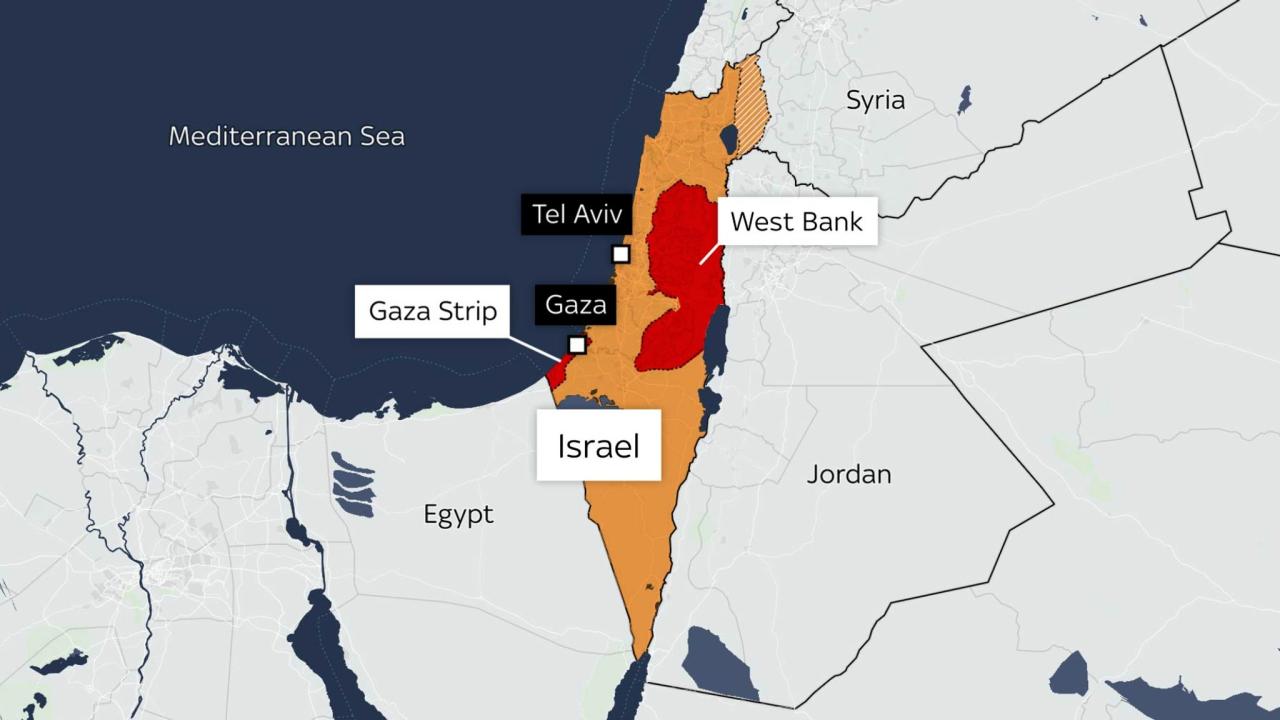
The ongoing conflict between Israel and Hamas in Gaza presents a complex web of interconnected factors, making any prediction of future outcomes uncertain. The intensity of the fighting, the humanitarian crisis, and the geopolitical landscape all play significant roles in shaping potential trajectories. Understanding these potential scenarios is crucial for comprehending the likely short-term and long-term implications for the region and its people.
Possible Scenarios
This section Artikels potential scenarios for the future of the conflict, taking into account the perspectives and factors at play. Each scenario will be assessed based on its short-term and long-term implications, as well as its likelihood.
| Scenario | Short-term Impact | Long-term Impact | Likelihood |
|---|---|---|---|
| Escalation and Continued Conflict | Further displacement of civilians, increased loss of life, and significant damage to infrastructure in Gaza. Potential for spillover effects into neighboring countries. | Deepening of the humanitarian crisis, further instability in the region, and a protracted period of political tension. Erosion of trust between Israel and Palestinian factions, hindering any future peace process. | Moderate |
| Ceasefire and Short-term Truce | Temporary reduction in violence and a respite from immediate loss of life. Increased humanitarian aid access to Gaza. | Limited long-term resolution to the underlying conflict. Potential for renewed violence if underlying issues are not addressed. Continued political polarization and distrust. | High |
| Negotiated Peace Agreement | Immediate cessation of hostilities. Increased security cooperation and economic aid for Gaza. | Long-term stability and improved relations between Israel and Palestinian factions. Reduced humanitarian crisis and improved living conditions for Gazans. | Low |
| International Intervention and Mediation | Possible deployment of international peacekeeping forces. Imposition of sanctions on Hamas. | Potential for a more stable and secure region. However, potential for resistance and further escalation if the intervention is perceived as biased or ineffective. | Moderate |
Short-term Implications
Short-term impacts of each scenario are primarily focused on immediate consequences. These consequences include the number of casualties, the extent of destruction, and the level of humanitarian assistance needed.
The ongoing Israel-Hamas-Gaza conflict is incredibly complex, with so many factors at play. It’s fascinating to see how the global community responds, and how these events impact families and communities. This situation is completely different from deciding on a baby’s last name, such as the considerations explored in the article about apellido bebe madre padre. However, both situations highlight the multifaceted nature of human experiences, and the ways that seemingly unrelated issues can connect and intertwine.
Hopefully, a peaceful resolution emerges soon for the Israel-Hamas-Gaza conflict.
Long-term Implications
Long-term implications are more complex and address the lasting effects of the conflict. These effects include the impact on regional stability, the political landscape, and the long-term well-being of the people affected.
Impact on the Lives of People in the Region
The outcomes of this conflict will profoundly affect the lives of individuals and families in the region. Displacement, loss of loved ones, and economic hardship are all potential realities. The nature of these impacts will vary depending on the specific scenario that unfolds.
Illustrative Imagery
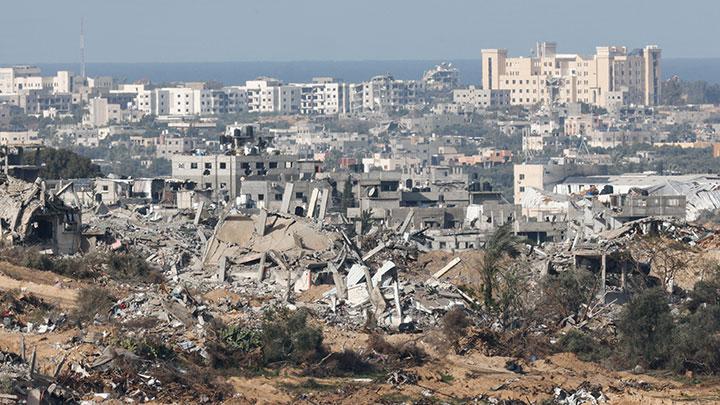
The conflict in Gaza and Israel has left an indelible mark on the landscape and the lives of countless individuals. Visual representations offer a glimpse into the human cost and the scale of the devastation. Images, while often powerful, can only partially convey the suffering and the profound impact of this ongoing crisis.
Bombed-Out Building in Gaza
A bombed-out building in Gaza stands as a stark testament to the conflict’s destructive power. Walls are pockmarked with bullet holes and shattered glass, the once-intact structure now reduced to a shell of its former self. Dust and debris litter the ground, a grim reminder of the explosions that ripped through the area. Broken furniture and personal belongings are scattered amidst the rubble, reflecting the sudden and violent displacement of families.
The silence that follows the blasts is broken only by the cries of those seeking survivors or searching for the remnants of their homes. The image evokes a profound sense of loss and the devastating human cost of war.
Refugee Camp Scene
A refugee camp in Gaza presents a heartbreaking scene of human resilience and suffering. Tents are crowded together, providing little privacy or protection from the elements. Families huddle close, sharing limited resources and facing uncertainty about the future. Children play amongst the debris, their innocence shadowed by the harsh realities of displacement. The lack of sanitation and basic necessities is evident, with lines forming at makeshift water points.
The ongoing Israel-Hamas-Gaza conflict has dominated headlines lately, and the sheer scale of the human cost is truly heartbreaking. While these events unfold, it’s fascinating to consider how sports figures like Adrian Beltre, the legendary Texas Rangers player, have paved their own paths to the Hall of Fame. Adrian Beltre hall of fame Texas Rangers Their achievements remind us of the strength and resilience found in the human spirit, and it’s a welcome counterpoint to the tragic news coming out of the Middle East.
The global community continues to grapple with the fallout from this conflict.
The sheer density of people in this cramped space highlights the scale of the displacement and the urgent need for humanitarian aid.
Israeli Soldier Assisting a Palestinian Child
An Israeli soldier kneels beside a Palestinian child, offering comfort and aid. The child, perhaps injured or frightened, looks up at the soldier with a mix of fear and hope. The soldier’s expression is one of concern and compassion. This image, despite the context of the conflict, captures a moment of human connection amidst adversity. It offers a counterpoint to the pervasive images of destruction, showcasing the potential for empathy and assistance even in times of great tension.
This act of human connection is a testament to the possibility of understanding and bridging divides.
Palestinian Family Celebrating a Cultural Event Before the Conflict
A vibrant scene depicts a Palestinian family enjoying a cultural event before the conflict. People are laughing, dancing, and celebrating their traditions. Music fills the air, and the atmosphere is one of joy and community. The energy of the celebration is palpable, a stark contrast to the violence and destruction that followed. This image serves as a powerful reminder of the richness of Palestinian culture and the lives that were disrupted by the conflict.
It highlights the loss of normalcy and the human cost of the ongoing violence.
Historical Context
The Israeli-Palestinian conflict, a deeply rooted and complex struggle, has its origins in the historical and political landscape of the region. Understanding the timeline of key events is crucial to grasping the factors that have led to the current volatile situation. The conflict is characterized by competing claims to the land, differing interpretations of history, and unresolved political issues that have persisted for decades.
Timeline of Key Events
This timeline Artikels significant dates and milestones in the Israeli-Palestinian conflict, highlighting the progression of events and illustrating the factors contributing to the current conflict. It’s crucial to remember that this is a highly simplified representation of a multifaceted historical process.
| Date | Event | Description | Significance |
|---|---|---|---|
| 1882-1948 | Zionist Immigration and Arab Presence | Waves of Jewish immigration to Palestine began in the late 19th century, coinciding with the growth of Palestinian Arab communities. Tensions between the two groups intensified as Jewish settlements expanded. | Established the fundamental demographic and territorial basis for the conflict. |
| 1947 | UN Partition Plan | The UN proposed a partition plan dividing Palestine into separate Jewish and Arab states, with Jerusalem under international control. | This plan, though intended to resolve the conflict, was ultimately rejected by Arab leaders and led to the 1948 Arab-Israeli War. |
| 1948 | Arab-Israeli War | The establishment of the State of Israel was followed by a war between Israel and surrounding Arab states. The war resulted in displacement and significant population shifts. | Marked a major turning point in the conflict, resulting in the creation of Israel and the displacement of hundreds of thousands of Palestinians. |
| 1967 | Six-Day War | Israel decisively defeated Arab forces, capturing the West Bank, Gaza Strip, and the Golan Heights. | This war dramatically altered the regional power dynamic and solidified Israel’s control over these territories. |
| 1987-1993 | First Intifada | A Palestinian uprising against Israeli occupation in the occupied territories. | The Intifada highlighted the deep-seated resentment and frustration of Palestinians under Israeli control. |
| 1993 | Oslo Accords | Landmark peace agreements between Israel and the PLO, aiming to establish a Palestinian state alongside Israel. | Promised a path towards a two-state solution but ultimately failed to achieve its goals. |
| 2000-2005 | Second Intifada | A renewed Palestinian uprising in response to Israeli policies. | Further escalated the conflict, creating a cycle of violence and undermining the peace process. |
| 2006 | Hamas Victory in Palestinian Elections | Hamas, a Palestinian Islamist group, won the Palestinian legislative elections. | Hamas’s victory complicated the peace process and led to a different approach from Israel, including a blockade of Gaza. |
| 2014 | Operation Protective Edge | A large-scale Israeli military operation in Gaza. | The operation led to significant civilian casualties and damage in Gaza. |
Factors Contributing to the Current Conflict, Israel hamas gaza news
Several factors contribute to the persistence and escalation of the Israeli-Palestinian conflict. These include competing claims to historical land, differing interpretations of religious and historical narratives, ongoing political negotiations and disputes, and the influence of regional and international actors. The unresolved issues of borders, settlements, and the status of Jerusalem remain central points of contention.
Summary
In conclusion, the situation in Gaza demands immediate attention and a long-term commitment to finding lasting solutions. The multifaceted nature of the conflict necessitates a comprehensive understanding of the historical, political, and humanitarian factors at play. The ongoing violence and humanitarian crisis underscore the urgent need for diplomacy and a commitment to peace. The future of the region hangs in the balance.
FAQ Guide
What are the main causes of the Israeli-Palestinian conflict?
The conflict has deep historical roots, stemming from competing claims to land, differing interpretations of historical events, and political aspirations. It’s a complex issue with no easy answers.
How many people have been affected by the recent violence in Gaza?
The recent escalation of violence has resulted in significant casualties and displacement, affecting countless civilians on both sides. Detailed casualty figures vary depending on the source.
What is the role of the United Nations in this conflict?
The UN plays a vital role in mediating the conflict, providing humanitarian aid, and advocating for peace. Their efforts are often hampered by the differing perspectives and actions of the involved parties.
What are some potential long-term solutions to this conflict?
Long-term solutions require a sustained commitment to diplomacy, negotiations, and a willingness to address the underlying causes of the conflict. There is no easy solution.

